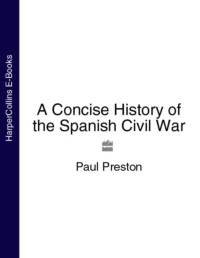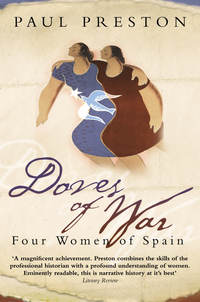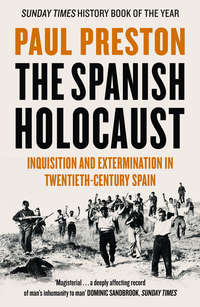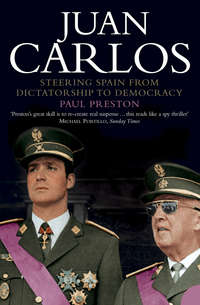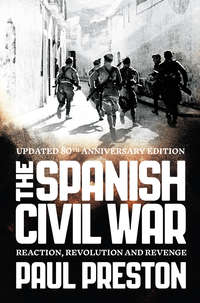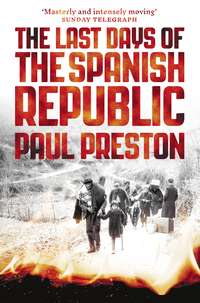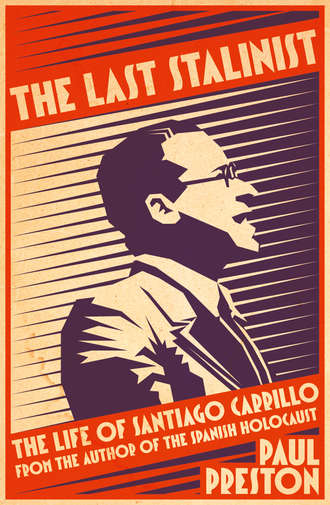
Полная версия
The Last Stalinist: The Life of Santiago Carrillo
Less than a month after the summer school, on 11 September, the Republican–Socialist coalition had fallen. Largo Caballero was interviewed by Carrillo for Renovación. Among other incendiary statements, he declared that ‘we are at the gates of an action that will lead the proletariat to social revolution … Socialism will have to resort to the maximum violence to displace capitalism … It is the task of the youth movement to firm up those who are indecisive and to push aside the passive elements who are of no use for the revolution.’55 A new government was formed by the leader of the corrupt Radical Party, Alejandro Lerroux. Lacking adequate parliamentary support, Lerroux was rapidly obliged to resign. He was replaced at the beginning of October by his deputy, Diego Martínez Barrio, who governed with the Cortes closed. Elections were called for 19 November.
In the run-up to the November 1933 elections, Carrillo’s editorial line in Renovación increasingly adopted an extremist rhetoric of violence intermingled with frequent quotations from Lenin. Carrillo himself wrote on 7 October that a general strike would not be sufficient for a revolution and that other ‘techniques’ were required, a veiled reference to his desire to see the workers armed.56 A voracious reader at this period of his life, he was starting to devour the more accessible works of Marx, Engels and, above all, Lenin, as well as the few works by Stalin that had been translated into Spanish. He read novels and personal accounts of the Russian revolution and was an enthusiast of Soviet cinema. In later life, he would recall his romantic view of what it meant to be an heroic Bolshevik revolutionary.57
Embittered by the frustrations of the previous two years, Largo Caballero ensured that the electoral coalition with the Republicans was not renewed and the Socialists went into the elections alone – a fatal tactical error. Intoxicated by the adulation of the FJS and influenced by the distress of the landless labourers, Largo Caballero irresponsibly blamed the Left Republicans for all the deficiencies of the Republic while confidently assuming that all the votes cast in 1931 for the victorious Republican–Socialist coalition would stay with the PSOE. There was little basis for such a belief. To make matters worse, during the campaign he alienated many of the liberal middle-class progressives who had previously voted for the coalition. His refrain that only the dictatorship of the proletariat could carry out the necessary economic disarmament of the bourgeoisie might have delighted his youthful supporters and the rural sectors of the UGT, but it frightened many potential voters.
In the course of the election campaign, the openly fascist Falange Española was launched on Sunday 29 October at the Teatro de la Comedia in Madrid. Recruits were issued with truncheons (porras). In his inaugural speech, the leader, José Antonio Primo de Rivera, made much of his commitment to violence: ‘if our aims have to be achieved by violence, let us not hold back before violence … The dialectic is all very well as a first instrument of communication. But the only dialectic admissible when justice or the Fatherland is offended is the dialectic of fists and pistols.’58
Since the existing electoral law favoured coalitions, Gil Robles eagerly sought allies across the right-wing spectrum, particularly with the Radical Party. The election results brought bitter disappointment to the Socialists, who won only fifty-eight seats. After local deals designed to exploit the electoral law, the CEDA (Confederación Española de Derechas Autónomas – or Spanish Confederation of Autonomous Right-Wing Groups) won 115 seats and the Radicals 104. The right had regained control of the apparatus of the state and was determined to use it to dismantle the reforms of the previous two years. The President, Niceto Alcalá Zamora, did not invite Gil Robles to form a government despite the fact that the CEDA had most seats in the Cortes although not an overall majority. Alcalá Zamora feared that the Catholic leader harboured more or less fascist ambitions to establish an authoritarian, corporative state. So Alejandro Lerroux, as leader of the second-largest party, became Prime Minister. Dependent on CEDA votes, the Radicals were to be Gil Robles’s puppets. In return for dismantling social legislation and pursuing harsh anti-labour policies in the interests of the CEDA’s wealthy backers, the Radicals would be permitted to enjoy the spoils of office. Once in government, they set up an office to organize the sale of state favours, monopolies, government procurement orders, licences and so on. The PSOE view was that the Radicals were hardly the appropriate defenders of the basic principles of the Republic against rightist assaults.
Thus the November 1933 elections put power in the hands of a right wing determined to overturn what little reforming legislation had been achieved by the Republican–Socialist coalition. Given that many industrial workers and rural labourers had been driven to desperation by the inadequacy of those reforms, a government set on destroying these reforms could only force them into violence. At the end of 1933, in a country with no welfare safety-net, 12 per cent of Spain’s workforce was unemployed, and in the south the figure was nearer 20 per cent. Now employers and landowners celebrated the victory by cutting wages, sacking workers, evicting tenants and raising rents. Even before a new government had taken office, labour legislation was being blatantly ignored.
Outrage across the Socialist movement knew no bounds but nowhere more vehemently than in the FJS. Carrillo’s response in Renovación took the form of a banner headline ‘ALL POWER FOR THE SOCIALISTS’. His editorial came under the sub-heading ‘They stole our election victory’. The tactical error of Largo Caballero in rejecting a coalition with the Republicans was a key element in the PSOE’s electoral defeat, but that did not prevent Carrillo from laying the blame at the door of the Republicans. He trumpeted the general view within the party that the elections had been fraudulent.59 In the south, it is certainly true that the Socialists had been swindled out of seats by the power over the starving braceros of the local bosses, the caciques. In rural areas where hunger, insecurity and unemployment were endemic, it had been easy to get votes by the promise of jobs or the threat of dismissal. Armed thugs employed by the caciques frequently prevented Socialist campaigners reaching meetings and disrupted others. They were a threatening presence standing next to the glass voting urns on election day.
In Spain as a whole, the PSOE’s 1,627,472 votes had won it 58 seats in the Cortes, while the Radicals’ 806,340 votes had been rewarded with 104 seats. The united parties of the right had together got 3,345,504 votes and 212 seats at 15,780 votes per seat, while the disunited left had received 3,375,432 votes and only 99 seats at 34,095 votes per seat.60 In some southern provinces, such as Badajoz, Córdoba and Málaga, the margin of right-wing victory was small enough for electoral fraud to have swung the result. The bitterness of the Socialist rank and file at losing the elections unfairly was compounded by dismay at the subsequent untrammelled offensive of the employers. Popular outrage was all the greater because of the restraint and self-sacrifice that had characterized Socialist policy between 1931 and 1933. According to Largo Caballero, delegations of workers’ representatives from the provinces came to Madrid to beg the PSOE executive committee to organize a counter-offensive. Efforts were made by the Caballerista party executive to reach an agreement with the Besteirista executive of the UGT on action to block any attempt to establish fascism, to restore the monarchy or to establish a dictatorship. At a joint meeting of the PSOE and UGT executives on 25 November, Besteiro, Saborit and Trifón Gómez made it clear that the UGT executive was hostile to any kind of adventurism. A furious Largo Caballero declared that ‘the workers themselves were calling for rapid and energetic action’. Even Prieto finally agreed with Largo on the need for ‘defensive action’. Eventually, a joint committee of the PSOE and the UGT would be set up to elaborate this ‘defensive action’.61
Needless to say, the FJS was not slow with a radical rhetoric in response to the changed situation. Pushing the logic of Largo Caballero’s declarations to their logical extremes, Carrillo declared in that first editorial after the elections: ‘the proletariat knows where it stands and has understood that it must take the road of insurrection’. By the following week, the main headline in Renovación was ‘LONG LIVE SOCIAL REVOLUTION’, and Largo Caballero was quoted as saying that a social revolution was necessary to secure all power for the Socialists. Such overt militancy broadcast in Renovación and also in El Socialista led to a police raid on the Gráfica Socialista printing works and the temporary banning of both papers.62
The accentuation of revolutionary rhetoric was a response to the growing wave of militancy and, in Largo Caballero’s case, a merely verbal extremism intended to calm rank-and-file desperation. Largo Caballero’s vain hope was that his threats could both scare the right into limiting its belligerency and persuade the President of the Republic, Niceto Alcalá Zamora, to call new elections. In Carrillo’s case, it was more genuinely revolutionary. The following – and equally provocative – issue of Renovación had to be submitted to government censorship, as a result of which it was not permitted to appear and both Carrillo and his closest ally Segundo Serrano Poncela were arrested and imprisoned in the Cárcel Modelo. After a few days, they were tried for subversion but found not guilty by an emergency court. When Renovación reappeared, Carrillo’s editorial line was slightly more restrained. Under the headline ‘Another Fascist Shriek’, he responded to a speech made in the Cortes on 19 December in which Gil Robles had laid out the policies that the new Radical government would have to implement in order to stay in power with CEDA votes. His demands revealed the narrow interests defended by the CEDA. They included amnesty for those imprisoned for the military rising of August 1932, a revision of the religious legislation of the Constituent Cortes and a sweeping attack on social reforms. All the decrees that had been most welcomed by the landless peasantry – the law of municipal boundaries, that of obligatory cultivation and the introduction of mixed juries – were to be revised. He also called for a reduction of the area of land subject to expropriation under the agrarian reform bill. Carrillo’s editorial ended with a perspicacious comparison of Gil Robles’s tactics with those of the authoritarian Austrian Prime Minister Engelbert Dollfuss, a call for an energetic response and a threat that the FJS would not go down without a fight.63
On 13 December 1933, the UGT’s National Committee discussed the PSOE’s calls for action in response to the deteriorating position of the working class in both rural and urban Spain. Against the calls for calm from Saborit and Trifón Gómez, Carrillo’s ally Amaro del Rosal, the hot-headed president of the Federation of Bank and Stock Exchange Workers, proposed that the UGT join the PSOE in organizing a revolutionary movement to seize power and establish socialism. He was supported by, among others, Carlos Hernández Zancajo, leader of the transport workers. Del Rosal’s proposal was defeated, but further acrimonious debate led to a decision to call an extraordinary congress of the UGT to resolve the bitter divisions between the moderate Besteiristas and the young revolutionary supporters of Largo Caballero.64 When that meeting took place on 31 December, one after another the leaders of the major federations of the UGT – the mineworkers, the textile workers, the bakery workers, the hotel workers, the metalworkers, the bank workers and the transport workers – rose to declare that they supported the line of the PSOE executive and not that of the UGT. They were opposed only by the representatives of the Besteirista strongholds, the printers, the landworkers’ Federación Nacional de Trabajadores de la Tierra (FNTT) and the railwaymen. Amaro del Rosal proposed that the UGT join with the PSOE in organizing ‘a national revolutionary movement to seize power and establish socialism’. When he and Carlos Hernández Zancajo talked of establishing the dictatorship of the proletariat, the proposal was defeated by twenty-eight votes to seventeen.65
As their mouthpiece Renovación was in constant difficulties with the authorities, receiving fines and, on some days, the entire print-run being seized, Carrillo understandably saw this as a deliberate attempt to destroy the paper economically. As a result, under the headline ‘They are pushing us into clandestinity’, he wrote that, as a revolutionary group, the FJS might have to go underground. Indeed, the FJS began tentatively to organize its own militias. Carrillo’s efforts in this regard were central to what passed for the creation of Socialist militias prior to the general strike of October 1934 in Madrid. Both through the pages of Renovación and via numerous circulars, the FJS issued instructions about the creation of a paramilitary organization.66
Not fully perceiving the emptiness of Largo Caballero’s rhetoric, Carrillo could legitimately feel that he had full backing for this from the senior party leadership. The PSOE had named a special commission, presided over by Largo Caballero, to examine the practical side of organizing a revolutionary movement and, after another tense meeting on 9 January 1934, the UGT’s National Committee had reluctantly agreed to participate. Largo Caballero then insisted that the PSOE’s policies be submitted to the UGT’s National Committee. This was to meet on 27 January.67 In the meanwhile, on 13 January, the PSOE executive approved a five-point programme of immediate action, drawn up by Largo Caballero himself. This called for (1) the organization of a frankly revolutionary movement; (2) the declaration of such a movement at the right moment, preferably before the enemy could take definitive precautions; (3) contacts to be made between the PSOE and the UGT and any other groups ready to cooperate in the movement; and, in the event of triumph, (4) the PSOE and the UGT, in collaboration with other participants in the revolution, to take political power, and (5) the implementation of a ten-point reform programme drawn up by Prieto.68
When the UGT’s National Committee met on 27 January to discuss the various projects, against the fierce opposition of Besteiro, the PSOE’s revolutionary project was approved by thirty-three members of the committee. Only Trifón Gómez of the Railway Workers’ Union and Lucio Martínez Gil of the FNTT voted for the executive, which immediately resigned en masse. Two days later, a new UGT executive was elected, with Largo Caballero as secretary general and including some of the most radical members of the FJS: Ricardo Zabalza of the FNTT, Carlos Hernández Zancajo and Amaro del Rosal. On 30 January, the National Committee of the FNTT had also met to debate the revolutionary proposals. An identical situation had arisen within its ranks. The entire executive, all Besteiristas, resigned, and a new committee of young Caballeristas was elected under Zabalza’s presidency. The organizations of the Socialist movement were falling in quick succession to the extremist youth. A meeting of the most influential section within the PSOE, the Agrupación Socialista Madrileña, was packed by young Socialists, who passed a motion of censure against its president, Trifón Gómez, obliging him to resign. He was replaced by supporters of Largo Caballero, with Rafael Henche as president and Julio Álvarez del Vayo as vice-president backed by a group of the most fervent ‘bolshevizers’, including Hernández Zancajo and Santiago Carrillo.
With Largo Caballero now controlling both the UGT and PSOE executives and the FJS in the hands of his most fervent supporters, a joint committee was immediately established to make preparations for a revolutionary movement. It consisted of Juan Simeón Vidarte, Pascual Tomás and Enrique de Francisco for the Socialist Party, Felipe Pretel, José Díaz-Alor and Carlos Hernández Zancajo for the UGT and Santiago Carrillo for the FJS. Carrillo was thrilled and would take the appointment more seriously than most of the others on the committee. It was a remarkable appointment for someone who had only recently had his nineteenth birthday. With his large glasses and chubby, beardless cheeks, he looked even younger. Operating from UGT headquarters in Madrid, the committee contacted the PSOE, UGT and FJS organizations in each province and issued seventy-three instructions for the creation of militias, the acquisition of arms, the establishment of links with sympathetic local units of the army and the Civil Guard and the organization of squads of technicians able to take over the running of basic services. The response from the provinces was deeply discouraging and there is little evidence, apart from the flurry of communications generated by the committee, that any practical action was taken.69
Since all sections of the Socialist movement were outraged at the perceived injustice of the election results and the rapid dismantling of the few social advances made from 1931 to 1933, a resort to revolutionary verbalism was understandable. However, when it came to organizing real confrontation with the apparatus of the state, despite the Caballeristas’ sweeping conquest of the leadership positions in the PSOE, the UGT and the FJS, there was considerable trepidation. Most union functionaries and militants remained cautious, and even Largo Caballero and his older trade union supporters were far from comfortable with the bolshevizing policies of Carrillo and the other young radicals. Largo Caballero might call for the dissolution of the army and the Civil Guard and for the arming of the workers.70 However, for him and for the older trade unionists, revolutionary threats were little more than that: threats that they had neither the inclination nor the expertise to implement. The young bolshevizers, in contrast, felt an intense exhilaration about the ideas expressed in the pages of Renovación. They too had little idea of how to implement their rhetoric and were thus united with Largo Caballero only in irresponsibility and incompetence.
The provincial sections barely responded to the hopeful missives of the revolutionary committee. That, together with Largo Caballero’s cautious trade union instincts, ensured that, except in the mining districts of Asturias, the activities of the revolutionary committee never went much beyond rhetoric. The committee issued a ‘secret’ instruction that a revolutionary movement would be launched in the event of the CEDA joining the government. Since it was meant to be a warning to the President of the Republic, Alcalá Zamora was told about it and Gil Robles and other leaders of the right were fully aware of its existence. The lack of secrecy and the lack of any link between the chosen ‘revolutionary moment’ and any real working-class struggles effectively gave all the cards to the government. On 3 February, the new UGT executive met to decide whether to try to stop all strike action so that the movement could harness its energies for the projected revolution. Revealingly, it was decided, at the urging of Largo Caballero, that UGT members should not be asked to abstain from strike action in defence of their economic interests.71 Nevertheless, in issue after issue, the FJS gave ever more coverage to the achievements of the Soviet Union while calling for social revolution, armed insurrection and the dictatorship of the proletariat.72 Such indiscreet, not to say strident, revolutionism provided the perfect excuse throughout the spring and summer of 1934 for the government’s uncompromising repression of strikes that were not revolutionary but rather had only limited economic objectives.
Concern about the intentions of the right had intensified with the appointment at the beginning of March of a new Minister of the Interior, the thirty-nine-year-old Rafael Salazar Alonso. Although a member of the Radical Party, he was effectively the representative of the landowners of Badajoz, with whom he had many personal connections.73 Shortly after taking up his post, Salazar Alonso told the Director General of the Civil Guard that his forces need not be inhibited in their interventions in social conflicts.74 Gil Robles was delighted with Salazar Alonso who, on 7 March, declared a state of emergency and closed down the headquarters of the FJS, the Communist Party and the anarcho-syndicalist CNT. Renovación was banned and did not reappear until early April.
Santiago Carrillo’s own ever more vehement advocacy of ultra-revolutionary positions saw him arrested again in February 1934 for a speech made at the small town of Campo de Criptana in the province of Ciudad Real. His offence was to have insulted the President of the Republic, whom he accused of opening the way to fascism by dissolving the Constituent Cortes. During his short stay in the prison of Ciudad Real, Carrillo heard the news of the Austrian Socialist uprising against Dollfuss. It fired his growing enthusiasm for violence as the only valid means to combat fascism. Although the Austrian insurrection was crushed, he would incessantly cite it as an example for Spanish Socialists.75 At the Fifth Congress of the FJS held in the third week of April 1934, an airy commitment to an armed insurrection was made. A new executive committee was elected with Hernández Zancajo as president and Carrillo as secretary general. Carrillo’s closest friends among the bolshevizers – José Laín Entralgo, Federico Melchor, Serrano Poncela, José Cazorla and Aurora Arnaiz, all of whom later joined the Communist Party – were elected on to the committee. There was much talk of armed insurrection and the dictatorship of the proletariat. Espartaco, a theoretical journal, was created. Its first issue appeared three months later and contained an attack on the PSOE’s parliamentary group (minoría). Over the next few months, Prieto and those Socialists who believed in parliamentary action would be denigrated in the belief that they constituted an obstacle to the inevitable revolution.76
The extent to which the FJS was moving ahead of its idol Largo Caballero was illustrated by the decision of the new FJS executive, without consultation with the leadership of either the PSOE or the UGT, to call a general strike in Madrid. This was a response to the passage through the Cortes, while the FJS congress was in session, of the CEDA’s amnesty law for right-wing attacks on the Republic, which encompassed the plotters responsible for the military coup of August 1932. While the President dithered about signing it into law, the CEDA made a sinister gesture in the form of a large rally of its youth movement, the JAP (Juventud de Acción Popular). It had been planned since January, and Renovación had warned that it might culminate in a fascist ‘march on Madrid’. The JAP held hundreds of meetings to drum up support and arranged special trains with subsidized tickets. Coinciding with the political crisis over the amnesty, the rally inevitably had the appearance of an attempt to pressurize Alcalá Zamora into signing the law. The choice of Philip II’s monastery of El Escorial as venue was an obviously anti-Republican gesture. In order to prevent the rally being the starting point for a ‘march on Madrid’, the FJS committee called a general strike. In the event, despite the giant publicity campaign and the large sums spent, torrential rain and the impact of the strike on the transport facilities offered by the organizers ensured that fewer than half of the expected 50,000 actually took part.77 The real initiative for the strike was probably taken not by Carrillo and the FJS but by the Izquierda Comunista. This Trotskyist group had been founded by Trotsky’s one-time friend and collaborator Andreu Nin and was led in Madrid by Manuel Fernández Grandizo, who used the pseudonym Grandizo Munis. Nevertheless, the strike order was actually issued by the FJS.78
The Izquierda Comunista was, like the FJS, part of the Alianza Obrera (Workers’ Alliance). It was the brainchild of Joaquín Maurín, leader of the quasi-Trotskyist Bloc Obrer i Camperol (Worker and Peasant Bloc), who argued that only a united working class could resist the great advances of the authoritarian right.79 For Largo Caballero, the Alianza Obrera was just a possible means of dominating the workers’ movement in areas where the UGT was relatively weak, less an instrument of rank-and-file working-class unity than a liaison committee dominated by Socialists linking existing organizations.80 In Madrid, the Socialist leadership effectively imposed its own policy on the Alianza. Throughout the spring and into the early part of the summer of 1934, the Socialist members blocked every revolutionary initiative proposed by the Izquierda Comunista representative, Fernández Grandizo, claiming cynically that the UGT had to avoid partial strike actions and save itself for the ultimate struggle against fascism. The one exception seems to have been the general strike in protest against the JAP rally at El Escorial. Nevertheless, Carrillo was an enthusiast for the Alianza Obrera, since he was deeply committed to the idea of working-class unity.


